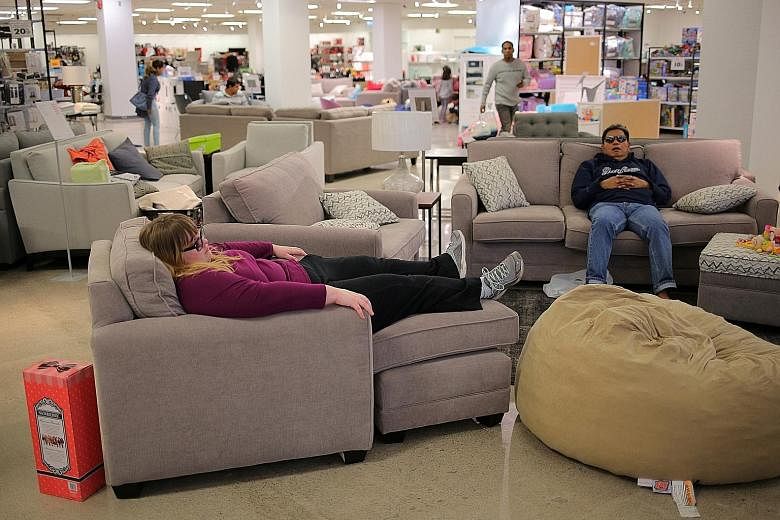NEW YORK • Sit up and take notice if you are planning to buy furniture.
Americans, for example, spend more than US$100 billion (S$133 billion) a year on furniture and often do not get what they pay for.
Furniture labels are confusing - frequently misleading even - and the United States government no longer oversees their content.
Jennifer Litwin, author of Best Furniture Buying Tips Ever, said: "This has hurt consumers shopping in low-and high-end markets."
Mr John Smith, designer at Willem Smith FurnitureWorks, said: "Although the adage 'you get what you pay for' frequently holds true, it would be helpful if you knew what you paid for as well."
Here are several common furniture labelling problems, along with advice on how to find solutions.
MISREPRESENTED WOOD
The old Federal Trade Commission (FTC) guideline said makers should not use wood names on labels unless the piece was made of "solid wood of the type named".
In other words, calling a piece of furniture "oak" because it was coated in oak-coloured stain or clad in oak veneer was against the rules.
What to do: Furniture sellers used to have to put all the details of a piece's construction on the sales tag. Today, it is important to check any additional information on brochures or websites.
Furniture made of solid wood stained to look like another wood is not a bad thing, as long as you know.
To spot particle board, look at the back, peer inside drawers and turn the piece over to see the bottom.
Feel the surface of the furniture. If you cannot feel the grain, it could be laminate - plastic with a wood pattern laser-printed on it.
MISREPRESENTED LEATHER
"Bonded leather" is the scourge of the upholstered furniture industry.
Bonded leather consists of a thin plastic front, a fabric middle and ground-up leather particles on the back.
The FTC does maintain a leather labelling guideline, which says manufacturers should disclose the amount of ground leather in bonded leather, but it does not specifically apply to furniture.
What to do: Avoid the labels "genuine leather", "bonded leather", "bicast leather" and "PU leather" (polyurethane leather). Instead, look for "full grain" or "top grain", suggested Mr Smith.
But even those labels are sometimes manipulated. To guard against that, consider the price. If it is too cheap to be true, it is not.
MISREPRESENTED FABRIC
Real linen is made from fibres found in the flax plant. It is prized because it is natural, durable and breathable, so it stays cool in the summer.
Unfortunately, Litwin increasingly sees other fabrics passed off as linen. "A lot of stores are selling fabric marked 'linen' in neutral colours, when really it is just a cheaper polyester blend," she added.
What to do: Ask the seller for paperwork documenting the actual fibre content of the upholstery or look online. As a last resort, request the safety data sheet for the fabric.
Furniture fabrics are required to be fire-resistant so they are tested at laboratories. This document should also state the fibre content of the fabric.
MISREPRESENTED FOAM
There has been a backlash against polyurethane foam because it is a petroleum product.
Enter "soy foam". It is a feel-good label that eco-conscious consumers seem to like.
Unfortunately, said Mr Smith, cushions labelled "soy foam" are actually hybrids and almost certainly made from far less soy foam than they are polyurethane foam.
"Soy may be great and green, but the percentage is minimal," he added.
"Don't be misled by a marketeer's purposely obtuse description into believing that your sofa is a reconstituted field of organic soy beans."
What to do: Ask for documentation of what percentage of the foam is from soy. Then decide whether you are willing to pay a premium for it.
For this and any furniture advertised as "green", look for certifications by groups such as Greenguard.
WASHINGTON POST

